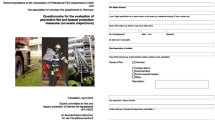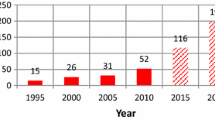Abstract
The authorities, the construction association, and a number of companies in Denmark have supported the author writing a guide for design of building structures for parametric fires. The guide is published by the ministry as a supplement to the building regulations. However, consultants and contractors have asked for a reference in English in order to make the guide-lines and the background for them available internationally. The paper therefore presents recommendations from the design guide especially concerning how to assess parametric design fires based on the opening factor method for large compartments. Findings leading to the guide-lines are discussed, and it is indicated what a safe design fire model means for structural design and how it differs from a safe design fire model for evacuation. Furthermore, the paper includes some experiences from the application of the design guide in practise especially concerning implementation of consequences of the latest development of the building technology, where low-energy windows and step-noise damping give rise to changes of the design fires.












Similar content being viewed by others
References
Vitruvius VP (1960) Ten books on architecture. Book 2, chap 9, 16. English by Morgan MH. Harvard University Press 1914, Dover Publications Inc. New York
Bausinger J (1885) Columns of cast iron, malleable iron, and stone exposed to fire and rapid cooling (Ueber das Verhalten gusseiserner, schmiedeiserner und strinerner Säulen im Feuer und bei rascher Abkühlung). Mittheilungen aus dem Machanisch-Technischen Laboratorium der K. Technischen Hochschule in München
Babrauskas V, Williamson RB (1978) The historical basis of fire resistance testing—part I. Fire Technol 14(3)304–316
Babrauskas V, Williamson RB (1978) The historical basis of fire resistance testing—part II. Fire Technol 14(4):184–194
Kawagoe K, Sekine T (1963) Estimation of fire temperature-time curve in rooms. Building Research Institute Occasional Report 11, Tokyo
Pettersson O Magnusson S-E, Thor J (1976) Fire engineering design of steel structures. Swedish Institute of Steel Construction, Publication No. 50, Stockholm
Hadvig S (1981) Charring of wood in building fires. Technical University of Denmark, Denmark
Hertz KD (2006) Guide for design of building structures for fully developed fires (In Danish), version 2–3. National Agency for Enterprise and Construction, Copenhagen
CEN (2002) Eurocode 1: actions on structures. EN 1991-1-2. Brussels
Dansk Standard (1999) Norm for last på konstruktioner. DS 410 (code for actions on structures). Copenhagen
Hertz KD (2008) Users guide for the program ConFire, 1st ed. Department of Civil Engineering, Technical University of Denmark. Available at http://www.byg.dtu.dk/Forskning/Software.aspx
Kirby BR, Wainman DE, Tomlinson TL, Kay TR, Peacock BN (1994) Natural fires in large scale compartments. British Steel, BRE-Fire Research Station
Hertz KD (1983) Equivalent time of fire exposure for concrete structures. report 163. Department of Civil Engineering 1983, CIB W14/83/3(DK)
Acknowledgements
The author would like to express his gratitude to the Danish Enterprise and Construction Authority, the Danish Construction Association, and a number of contractors and consulting companies for encouraging and supporting the work of the design guide on which the present paper is based, and to British Steel and BRE-Fire Research Station for offering the data from their test series to public use.
Author information
Authors and Affiliations
Corresponding author
Rights and permissions
About this article
Cite this article
Hertz, K. Parametric Fires for Structural Design. Fire Technol 48, 807–823 (2012). https://doi.org/10.1007/s10694-011-0246-5
Received:
Accepted:
Published:
Issue Date:
DOI: https://doi.org/10.1007/s10694-011-0246-5




